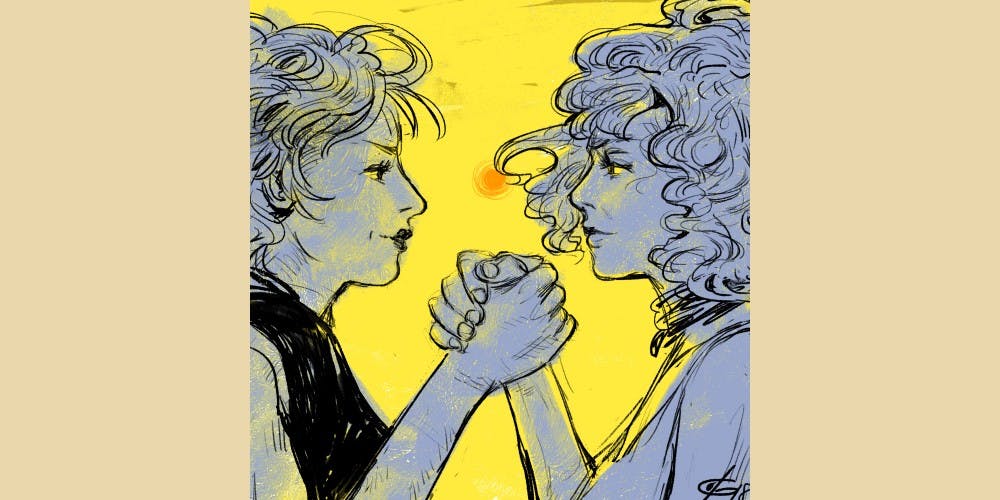Spoiler warning, but you’ve had 27 years to watch this.
Screenwriter Callie Khouri came up with the idea for Thelma and Louise one day while she was walking down the street and got catcalled by an old man in his car. He said he’d like her to suck his dick. She whipped off her sunglasses and replied that she’d like to shoot him in the face. Thelma & Louise, then, from its inception, was intended to have a very simple premise at its core: what if women could respond to catcallers and harassers the way they wished they could?
It is, of course, much more than that—it’s about female friendship, or maybe repressed homosexuality, depending on who you ask; it’s about navigating and escaping toxic relationships; it’s a quintessential road movie; it’s classic Ridley Scott; it’s really, really early Brad Pitt. It’s also been hailed as a feminist movie with strong female characters.
Parts of the film still speak to modern audiences in startlingly modern ways. When Thelma wonders if they should tell the cops that shooting Harlan was self–defense because he was trying to rape her. Louise reminds her that she had been dancing with him all night, so no one will believe that whatever he tried would have been nonconsensual. “Who’s gonna believe that?!” Louise says, “We just don’t live in that kind of world.”
But other parts don’t stand up as well. Some of the visual hallmarks of the two women, especially Thelma’s, journey to liberation, feel a little dated. By the end of the movie, they are braless and makeup–free, a choice that's a little simplistic and only superficially liberating. Buying into the idea of makeup/no makeup as non–feminist/feminist means women are still trapping themselves in that same sexist dichotomy in the first place.
If you’re looking for a female version of Easy Rider, a less depressing version of Badlands, a less heteronormative version of Bonnie & Clyde, or even just something to quench your '90s–kitsch nostalgia, this is the movie to watch. It’s also pretty hedonistically satisfying, in a what–if–we–could–shoot–rapists–and–torment–catcallers kind of way.
This is not to detract from the film’s importance for women in cinema. Thelma & Louise came out in 1991, and it was a remarkable step in Hollywood: two female leads, a female writer, and six Oscar nominations. At the time, it seemed like it was heralding in a new Hollywood where there were more leading roles for women both in front of and behind the camera. But in the quarter century since the movie came out, there has been disappointingly little change for women. There has been good change, yes, but not enough. Greta Gerwig, with her film Ladybird, is only the fifth woman in history to be nominated for an Academy Award for Best Director. The last time a woman was nominated, Kathryn Bigelow, for The Hurt Locker, was eight years ago—and that was also the first time a woman won the coveted award.
Thelma & Louise screenwriter Callie Khouri herself said she doesn’t think enough has changed in the industry since the movie came out. And the #metoo movement shows just how little Hollywood has changed since its inception to become a safer place for women.
And this is all before even mentioning the difficulties of being a woman of color or LGBTQ+ in Hollywood. Thelma & Louise, for all its merits, remains a movie about white women’s liberation, and is composed of an entirely white cast. Khouri envisioned a better landscape in Hollywood for women, and it’s long overdue to make that happen—not just for women like those portrayed in Thelma & Louise, but for those who would have never even been considered for the part.







